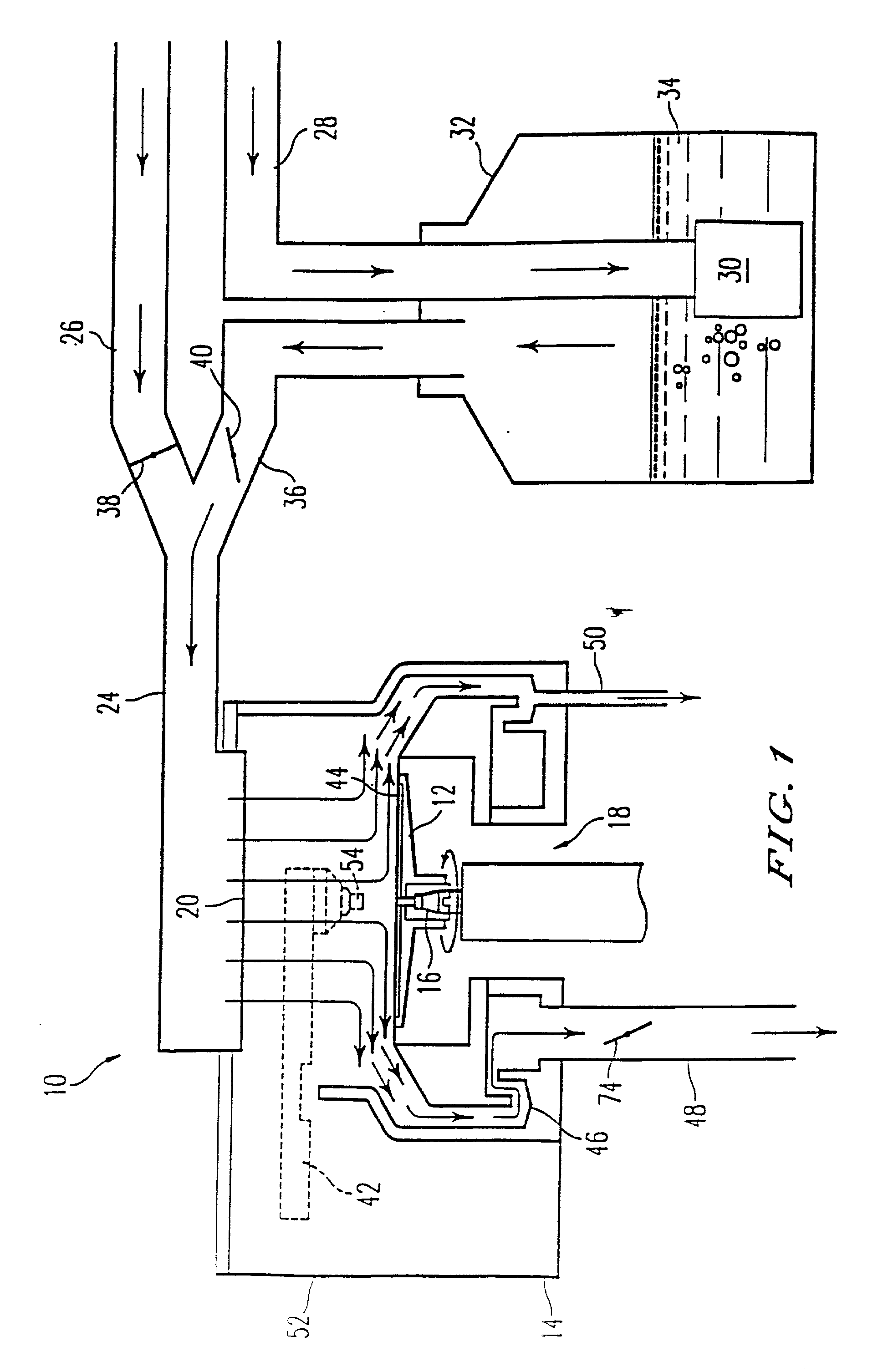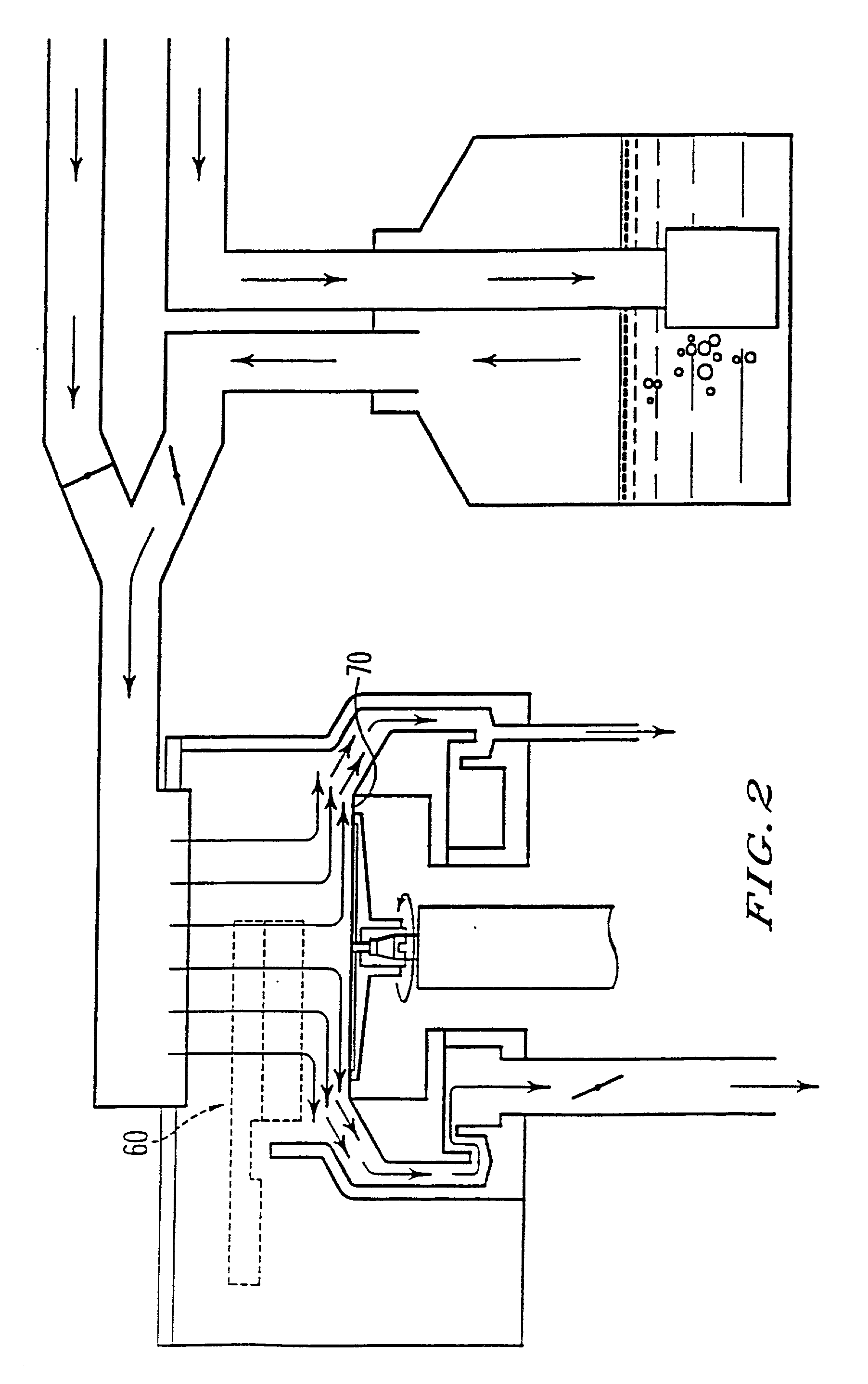Method of uniformly coating a substrate
a technology of uniform coating and substrate, applied in the field of uniform coating of substrate, can solve the problems of increasing the viscosity of the polymer solution, affecting the uniformity of the resulting film, and non-uniform thickness, so as to reduce the cost, reduce the thickness of the solution layer, and reduce the amount of polymer solution
- Summary
- Abstract
- Description
- Claims
- Application Information
AI Technical Summary
Benefits of technology
Problems solved by technology
Method used
Image
Examples
Embodiment Construction
[0050] A coating apparatus according to the invention and sized appropriately for 200 mm diameter wafers was assembled and installed in a wafer track machine. In-situ air pressure, air temperature, relative humidity and solvent concentration measurements were performed during the wafer processing. Ethyl lactate was used as the casting solvent for the photoresist. Solvent concentration within the process chamber was varied between 0-40% of the saturated value.
[0051] FIGS. 3a and 3b demonstrate results obtained by practicing a method according to the invention. As shown in FIGS. 3a and 3b, final film thickness can be varied by controlling solvent evaporation independent of the spin speed. In the limit of zero solvent flow rate, the evaporation rate is maximum, yielding the thickest film due to coupled nature of convective and evaporative mass transfer mechanisms. As the solvent flow rate is increased evaporation rate is reduced allowing resist film to continue thinning via convective ...
PUM
| Property | Measurement | Unit |
|---|---|---|
| temperature | aaaaa | aaaaa |
| diameter | aaaaa | aaaaa |
| thickness | aaaaa | aaaaa |
Abstract
Description
Claims
Application Information
 Login to View More
Login to View More - R&D
- Intellectual Property
- Life Sciences
- Materials
- Tech Scout
- Unparalleled Data Quality
- Higher Quality Content
- 60% Fewer Hallucinations
Browse by: Latest US Patents, China's latest patents, Technical Efficacy Thesaurus, Application Domain, Technology Topic, Popular Technical Reports.
© 2025 PatSnap. All rights reserved.Legal|Privacy policy|Modern Slavery Act Transparency Statement|Sitemap|About US| Contact US: help@patsnap.com



